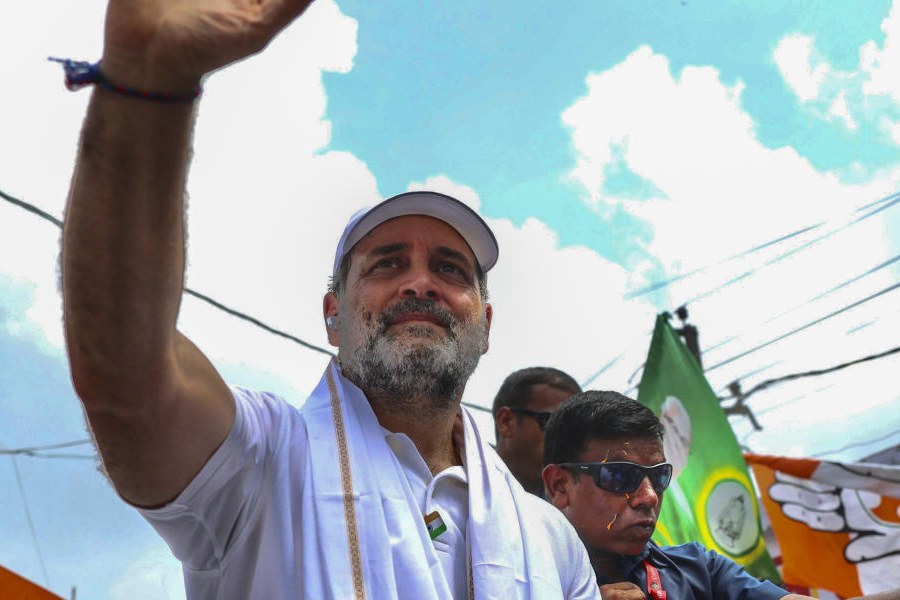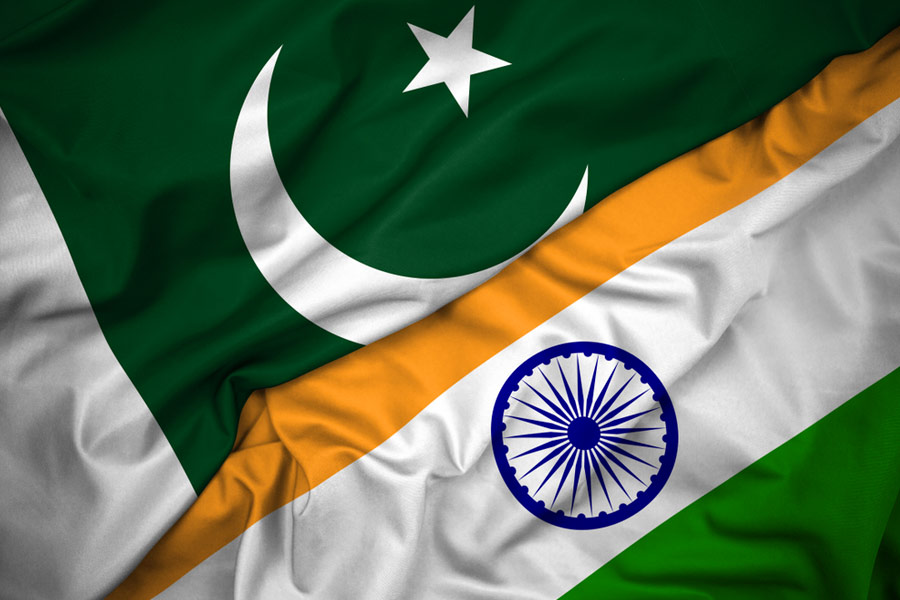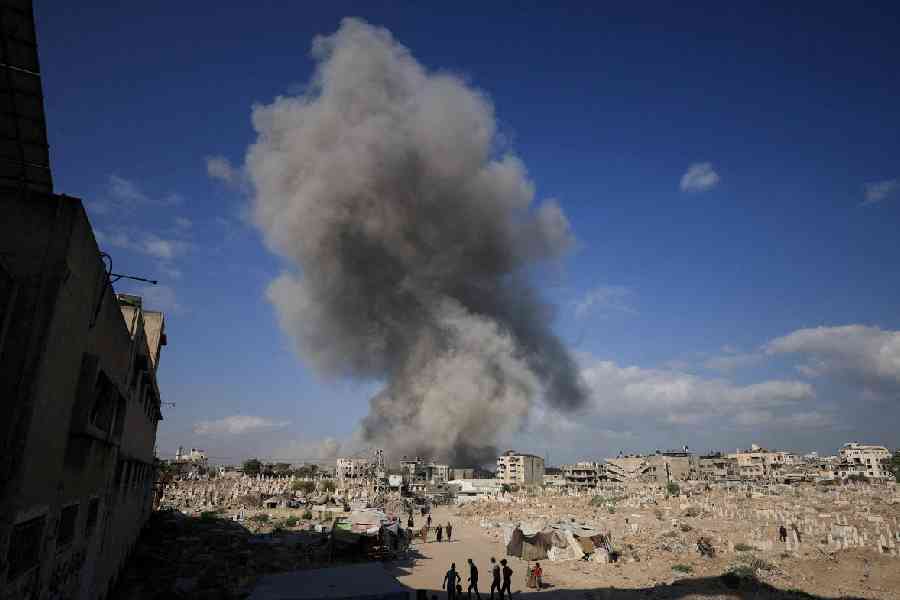|
|
In the second week of July, 1964, Lal Bahadur Shastri left Delhi for a meeting of Commonwealth prime ministers in London. En route, the plane stopped for refuelling in Karachi, where the President of Pakistan, Field Marshal Ayub Khan, was at hand to welcome the Indian visitor. There is a photograph of the two men together, the tall Pathan in his military uniform, towering over (in all senses) the tiny Kayasth in his dhoti and kurta. The contrast was noticed at the time, and by no less than the Field Marshal himself. “So this is the man who has succeeded [Jawaharlal] Nehru,” said Ayub to an aide, contemptuously.
That brief encounter was fateful, for it prompted the Pakistani leader to initiate armed action against India the following year. In August 1965, infiltrators were sent across the line of control into Kashmir. Soon afterwards, they were followed by regular troops of the Pakistan army. A full-fledged invasion was under way that sought to forcibly detach the Valley from India. It was thwarted by a brilliant counter-stroke, namely, the opening of a second front on the Punjab border. Fearing for the safety of their first city, Lahore, the Pakistanis now withdrew troops from Kashmir to defend it. By doing so they had lost the initiative, never to regain it.
The idea of marching across the Punjab was said to be that of Lieutenant General Harbaksh Singh, but had the prime minister not approved it would not have been put into practice. In a comparable situation, during the war with China in 1962, Jawaharlal Nehru had refused to sanction the use of the air force. Altogether, Shastri proved to be an effective leader in times of war — far more so than his predecessor. There is another picture that is revealing. Taken at the end of hostilities, it shows Shastri, clad as ever in his dhoti and kurta, on top of a Patton tank that had been captured by the enemy. It was a gesture that would not have come easily to Nehru.
In his lifetime, Lal Bahadur Shastri was grievously underestimated by the Pakistanis. After his death, he has been all but forgotten by his compatriots. If some Indians do remember him, it is only for his leadership in the 1965 war. But in fact his contributions to the nation were more substantial. Thus it was Shastri who laid the foundation of the Green Revolution. The first few Five Year Plans had neglected the agrarian sector, leading to a serious shortage of foodgrains. No sooner was he made prime minister that Shastri shifted his able colleague, C. Subramaniam, from the then prestigious steel ministry to the agriculture portfolio. With the prime minister’s backing, Subramaniam set about reorganizing the system of agricultural research, orienting it towards the selection and promotion of high-yielding varieties. These moves were consistent with the stirring slogan invented by the prime minister — “Jai Jawan, Jai Kisan”. Meanwhile, Shastri had also initiated moves to free industrial enterprise from the shackles of State control.
A somewhat less important member of Lal Bahadur Shastri’s cabinet was Indira Gandhi. She had been put in charge of information and broadcasting, a ministry which, in a pre-satellite and pre-cable age, had far less power and reach than it does now. She was somewhat discontented, writing to a friend in 1965 that she was thinking of giving up politics altogether to go and live in London. Both her sons were then studying in the United Kingdom, so it made some sense for her to go join them.
Anyway, in the first weeks of 1966 Shastri died of a heart attack in the city of Tashkent, which was then part of the Soviet Union. The Indian prime minister had gone there, at the invitation of the Soviets, to forge a peace treaty with Pakistan’s Ayub Khan. There has been some speculation about whether Shastri died of natural causes — speculation that continues because the government of India has (typically) refused to release the official report on his death. But perhaps there was no hanky-panky — perhaps it was just that his traditional apparel did him in, a dhoti and kurta being inadequate protection against the harsh cold of an Uzbek winter.
Shastri was only 63 when he died. The question one must ask is not how he died, but what if he had lived another five or even 10 years. His conduct during the war with Pakistan had greatly elevated him in the minds (and hearts) of his countrymen. Had he lived, he would have assuredly led the Congress to victory in the fourth general elections in 1967. With a solid majority behind him, he might have undertaken to find a final resolution to the Kashmir dispute. A further five years in power would also have allowed him, and his colleagues, to deepen their programmes of economic reform.
In the event, Shastri died, and Indira Gandhi became prime minister — not because she was the most able and experienced member of the cabinet, but because the Congress bosses thought they could control her. She led the party to a less-than-convincing victory in the 1967 elections, but then asserted herself by taking a sharp turn to the left — nationalizing the banks, abolishing the privy purses, adopting the slogan “Garibi hatao”. By the end of the 1960s, India was beginning to achieve self-sufficiency in food production. Naturally, the credit accrued to the incumbent prime minister, rather than to her dead predecessor. Meanwhile, she had also enjoyed a success that could be more directly attributed to her own initiative and drive — namely, the victory over Pakistan in the war of 1971.
But what if Lal Bahadur Shastri had lived? Then it would have been he, not Mrs Gandhi, who would have been praised for the benefits of the Green Revolution; he, not she, who would have been given credit for any battles won against Pakistan.
Had Shastri continued as prime minister until the end of the 1960s, or beyond, the economic history of India might have turned out very differently. In the 1950s, under the direction of the State, India had nurtured a reasonably robust domestic industry. It was now time to allow for the freer play of market forces. In speeches made in 1965, Shastri clearly indicated that he would like to take the economy in that direction. Sadly, he died soon afterwards. Instead of trusting to the energy and enterprise of the private sector, his successor strengthened the control of the State over the economy. The consequence was the continuation of low rates of growth, a situation that began to change only after the reforms of 1991 and beyond.
Had fate given Lal Bahadur Shastri a longer innings as prime minister, then the Indian economy may now have been more robust and resilient. For he was both a pragmatic reformer and a man of conscience. Had he freed the processes of production from State control, he would simultaneously have initiated welfare measures to ameliorate poverty. As a man of vision and integrity, he would also have sought to improve the performance of public institutions.
Had Shastri lived, Indira Gandhi may or may not have migrated to London. But even had she stayed in India, it is highly unlikely that she would have ever become prime minister. And it is certain that her son would never have occupied or aspired to that office. Had Shastri been given another five years, there would have been no Nehru-Gandhi dynasty. Sanjay Gandhi and Rajiv Gandhi would both be alive, and in private life. The former would have been a (failed) entrepreneur, the latter a recently retired airline pilot with a passion for photography. Finally, had Shastri lived longer, Sonia Gandhi would still be a devoted and loving housewife.











